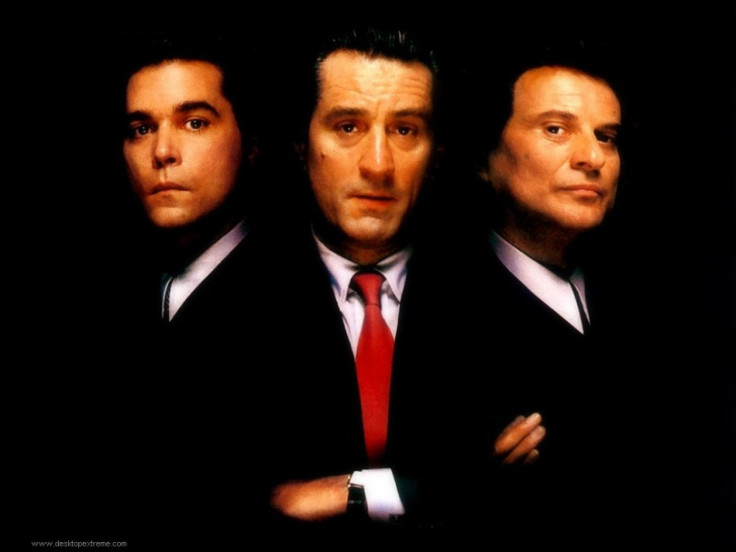What 'Goodfellas' Got Wrong
OPINION

The death of Henry Hill, the low-level mobster whose life story was immortalized in Martin Scorsese’s classic film “Goodfellas,” gives me an opportunity to discuss the greatest gangster movie ever made and one of the finest pieces of cinema in U.S. history.
However, since millions of words of praise have been heaped upon “Goodfellas” over the past two-plus decades, allow me to take a contrary approach and point out what was wrong with the movie.
-- Ray Liotta was badly miscast as Hill. While Liotta was tall, stylish, slender and handsome (at least as a young man), Hill was short, homely and slovenly. Hill, who came from the bleak streets of East New York-Brownsville, spoke in a heavy, guttural almost incomprehensible working-class Brooklyn accent. In contrast, Liotta has a naturally bland, suburban-speaking voice that was especially annoying given that he narrates much of the story.
But the casting is understandable from a marketing point of view -- after all, having an actor who actually looked and sounded like the real Hill as the star of a major Hollywood release would have been unthinkable.
-- As Liotta portrayed him, Hill came across in the movie as a (relatively) calm, intelligent and reasonable young man who seemed to be appalled by the violence all around him. In reality, Henry Hill was a monumental screwup who was hopelessly addicted to drugs much of his life and frequently behaved erratically. The movie seems to imply that he did not personally commit any murders, which is questionable.
-- Of greater concern, while “Goodfellas” and the book it was based on, “Wiseguys,” tell fascinating tales, Henry Hill’s credibility must be questioned. As a remorseless thief and drug addict, Hill was a habitual liar. Well into his membership in the Witness Protection Program, he couldn’t stay out of trouble and was eventually kicked out. As such, a great deal of his accounts on the lives and activities of his Mafia brethren must be taken with some skepticism.
In addition, by occupying the very lowest echelons of the Mafia food chain (he was, after all, not even a made member since he was half-Irish), Hill couldn’t possibly have been privy to some of the information he later released in book form and interviews.
-- Joe Pesci, who became a star with his unforgettable portrayal of psychotic killer Tommy DeVito, was also, in a way, miscast (though for completely different reasons from the Liotta-Hill case).
DeVito was based on Tommy DeSimone, an associate of Henry Hill in the Lucchese crime family.
There were at least two things wrong with the film’s depiction of DeSimone:
The film seems to suggest that Hill and DeVito were peers who grew up together. In reality, DeSimone was about 10 years younger than Hill (i.e., a completely different generation and outlook).
Moreover, DeSimone was tall, broad-shouldered and (unusually for a mobster) wore a moustache and long hair (the polar opposite of Joe Pesci).
Of course, Pesci wasn’t trying to portray the real Tommy -- having grown up with gangsters in his native Newark, N.J., Pesci likely based his characterization on the wiesguys he personally knew (and it succeeded beyond his wildest dreams).
-- A Martin Scorsese film about the New York Mafia without Robert De Niro would be unconscionable. However, DeNiro looked nothing like the real-life character he played.
Jimmy Burke (Jimmy Conway in the film) was a brutal Irish gangster who was tall and powerfully built with blue eyes and blondish-gray hair. (Perhaps Nick Nolte should have played him instead of De Niro).
In addition, unlike the smooth, calculating and stylish Conway, Burke was slovenly and vulgar and mistreated everyone around him, including his own family.
-- While Paul Sorvino’s character, Paulie Cicero, somewhat matched the physical appearance of the real-life doppelganger, Paulie Vario, their personalities and behavior patterns were radically different.
Sorvino played Cicero as a stern, but somewhat kindly and benevolent older man who looked out for the interests of his men and maintained a respectable home and family life. But Vario, a senior member of the Lucchese crime family, was a grossly obese, disheveled, ill-mannered man who was personally extremely violent, even to women (hardly a mentor to younger colleagues).
-- One of the most memorable scenes in the film was the murder of Billy Batts (“get yer ------ shinebox). Batts was a “made” member of the Gambino crime family (an associate of John Gotti) and had just been released from prison.
However, for dramatic (and perhaps even comedic) effect, the film indicates that DeSimone killed Batts simply because he reminded him he was once a humble shoe-shine boy. In reality, the murder of Batts was planned by Burke principally as a way to seize Batts’ lucrative loan-shark racket.
© Copyright IBTimes 2025. All rights reserved.





















